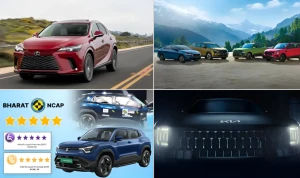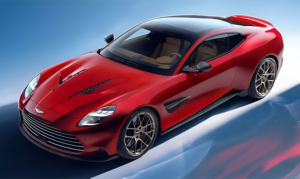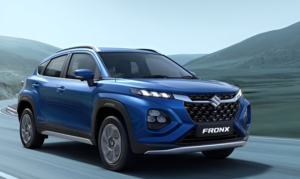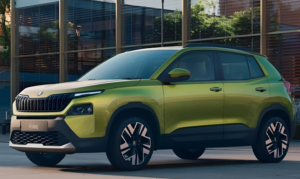GST 2.0 Raised to 40% on Large Cars, SUVs & Premium Vehicles – Small Cars GST Cut, Luxury Cars 40% Hike
- What this GST hike means for buyers, automakers, and India’s premium car market.
- How this could reshape demand for big‑engine models and luxury SUVs.
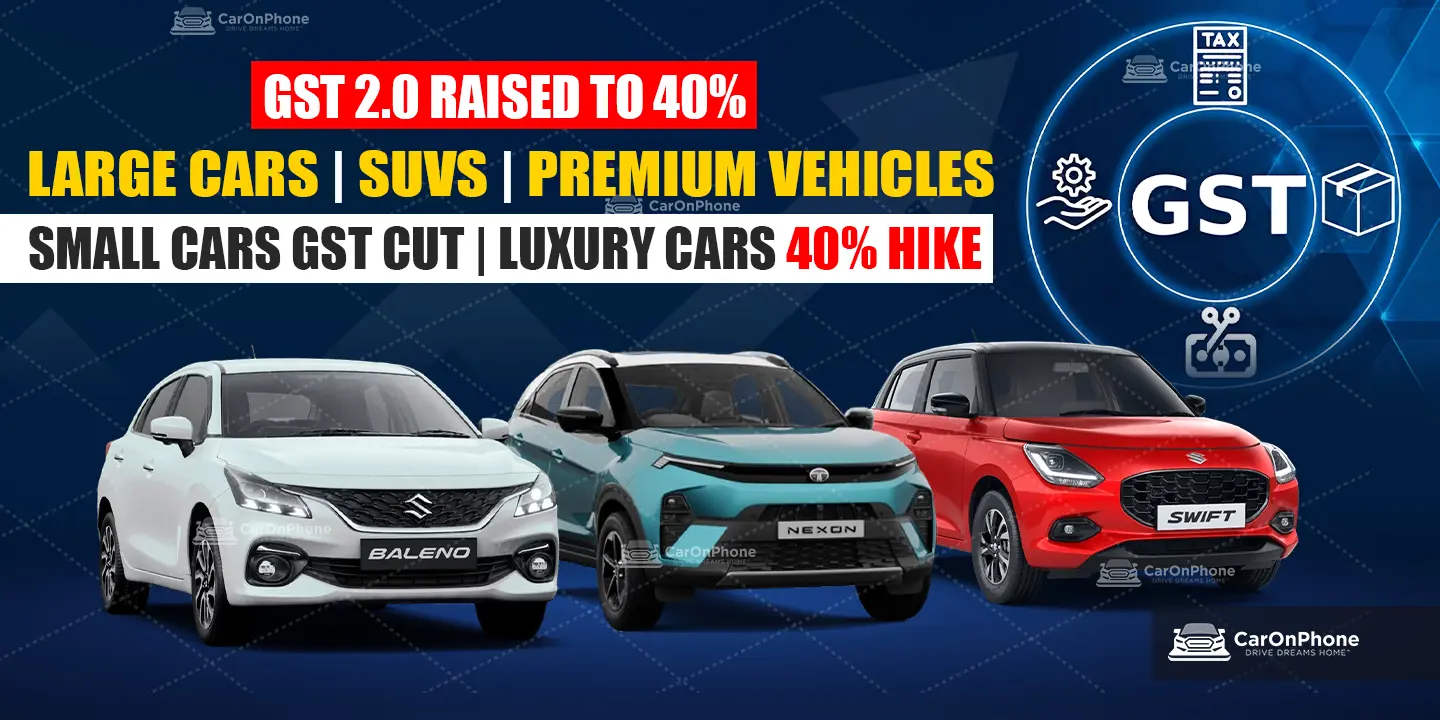
If you’ve been looking to get your hands on a luxury sedan or full‑size SUV, here’s a twist you must know. GST on SUVs in India 2025 and other large passenger vehicles has been set at a flat 40%.
The GST Council says this move, effective September 22, 2025, is part of a broader vehicle taxation policy India 2025 overhaul. It’s aimed at simplifying slabs while keeping high‑end consumption in the top bracket.
Catch the latest launches and updates on CarOnPhone!How large vehicles are affected by the 40% GST 2.0 hike
The 40% GST rate applies to:
- Petrol or hybrid cars with engines above 1,200cc or length over 4,000 mm.
- Diesel or hybrid cars with engines above 1,500cc or the same length threshold.
This ropes in most premium SUVs, executive sedans, and performance imports.
While the new slab is lower than the old 48–50% top rates, models that were taxed at 43–45% will now drop to 40%, implying a net reduction.
Small cars now have only 18% GST; down from 28%
Small cars — petrol under 1,200cc or diesel under 1,500cc, and within four metres — will see their GST rate drop from 28% plus 1–3% cess to 18% GST.
That’s a 12–12.5% cut in the overall tax burden, making entry‑level hatchbacks and compact sedans far more affordable.
This segment, which accounts for about 45% of India’s passenger vehicle market, has been losing share to SUVs in recent years. Sales fell 10% in FY24 to 11.3 lakh units, even as the overall car market grew 8%.
Industry leaders expect the latest GST tax cut to revive demand for models like Maruti’s Alto, Wagon R, and Swift, Hyundai’s Grand i10 and i20, and Tata’s Punch.
How does 2025 GST 2.0 hike compare to old GST rate for large cars?
Under the outgoing system, GST was 28% across the board, but a compensation cess varied by category:
Vehicle Type GST Cess Total Tax
Sub-4m petrol up to 1200cc 28% 1% 29%
Sub-4m diesel up to 1500cc 28% 3% 31%
Cars up to 1500cc 28% 17% 45%
Cars above 1500cc 28% 20% 48%
SUVs (above 4m, above 1500cc, 170mm GC) 28% 22% 50%
Sub‑4m hybrids 28% Nil 28%
Hybrids above 1200cc petrol/1500cc diesel 28% 15% 43%
Electric vehicles 5% Nil 5%
Now, instead of juggling GST + cess, the new GST on premium vehicles India applies a flat 40% to all qualifying large cars and SUVs.
While that’s lower than the old 48–50% top rates, some mid‑segment models that were at 43–45% will see a net SUV price hike due to GST 2.0.
Hybrids within small‑car limits also move to 18%; larger hybrids align with the 40% bracket.
Old vs New: GST 2.0 + Cess Structure
Earlier system:
- Sub‑4m petrol less than or same as 1,200cc: 28% GST + 1% cess = 29%
- Sub‑4m diesel less than or same as 1,500cc: 28% GST + 3% cess = 31%
- Cars less than or same as 1,500cc: 28% GST + 17% cess = 45%
- Cars more than 1,500cc: 28% GST + 20% cess = 48%
- SUVs (more than 4m, more than 1,500cc, 170mm GC): 28% GST + 22% cess = 50%
- Hybrids more than 1,200cc petrol / more than 1,500cc diesel: 28% GST + 15% cess = 43%
- EVs: 5% GST
Now:
- Small cars: 18% GST (plus minimal cess)
- Large cars/SUVs: Flat 40% GST
- EVs: 5% GST
- Car parts & accessories: 18% GST
GST 2.0 September 2025: What about parts, accessories, and EVs?
The aftermarket benefits greatly, thanks to GST on all car parts and accessories now at 18%. This could make repairs, customizations, and upgrades easier on budgets.
Moreover, electric vehicles remain at 5% GST. This is a sharp signal that the Indian government is sticking to its incentive for cleaner mobility.
Lastly, luxury EVs like BMW iX or Mercedes EQS still enjoy a major tax edge over petrol or diesel rivals.
Will GST 2.0 car tax changes slow the premium market?
Experts are split on this discussion. Some say the simpler tax structure will make pricing more transparent, helping buyers decide faster. Others warn that higher effective rates for certain models could dampen demand, especially with auto loan EMIs already climbing.
Luxury brands may counter the latest GST 2.0 raise with limited‑time offers, extended warranties, or added features to keep customers engaged. But given the GST Council’s stance, a rollback on the 40% slab seems unlikely anytime soon.
GST 40% Hike: Important notes for buyers
If you’ve been planning the perfect time to buy a large car, SUV, or premium vehicle, you can save a good bit of cash if you seal the deal before September 22.
- Buying before September 22 could save you money if your model currently sits in the 43–45% tax band.
- For small‑car buyers, the post‑September market will be the sweet spot, with double‑digit price drops likely to spur deals and discounts.
GST 2.0 overhaul sends a clear signal: compact, efficient, and cleaner vehicles are being rewarded, while the luxury lane remains firmly in the high‑tax zone.
Tags:
CarOnPhone is your one-stop destination to see all upcoming cars, latest cars, released cars, and EV Cars, and compare Cars in all Car Brands. Stay tuned and follow us to update yourself on the automotive world.

